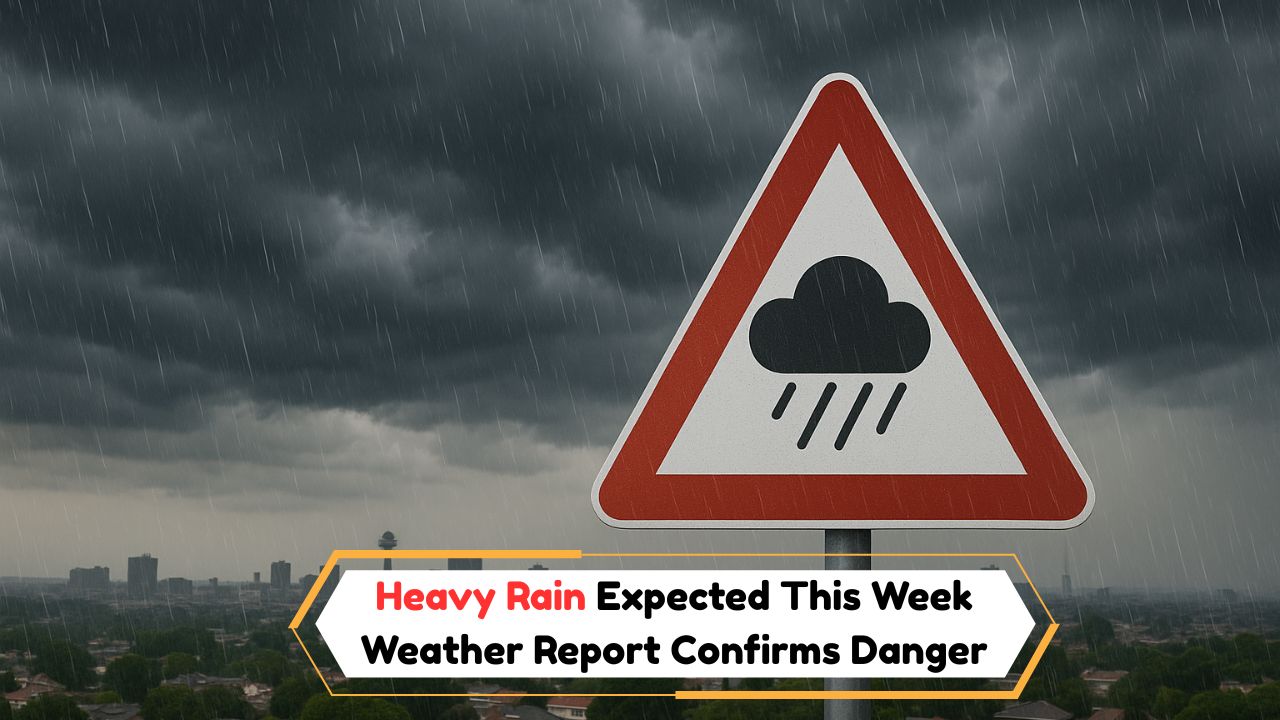Heavy Rainstorm – South Africa has been placed on high alert this week as meteorologists have issued a warning about a powerful rainstorm expected to hit multiple regions. Weather authorities have cautioned that heavy downpours, accompanied by thunderstorms and strong winds, could disrupt daily life and cause widespread damage if proper precautions are not taken. The storm is predicted to intensify over the next few days, with coastal areas, townships, and rural settlements being particularly vulnerable to flooding. Emergency services have already been mobilized, urging residents to stay updated with official weather reports and avoid unnecessary travel during the storm’s peak hours. Motorists have also been advised to drive carefully due to slippery roads and reduced visibility. Farmers and communities living near rivers or dams have been warned to prepare for possible overflowing and waterlogging, which could impact crops, livestock, and transport routes. This week’s weather alert highlights the importance of readiness as climate patterns become increasingly unpredictable across South Africa.
Heavy Rainstorm Impact Across Provinces
The heavy rainstorm is expected to impact several provinces across South Africa, with KwaZulu-Natal, Eastern Cape, Gauteng, and Western Cape most at risk. Forecast models suggest that these areas will experience intense rainfall within a short span of time, increasing the likelihood of flash floods, landslides, and overflowing drainage systems. In urban centers, blocked stormwater drains could worsen the flooding situation, while rural communities may face washed-out roads and limited access to essential services. Local authorities are urging residents to secure their properties, avoid low-lying areas, and remain indoors during the height of the storm. Public transport schedules may also face disruptions as bus and rail services operate at reduced capacity in flooded zones. Schools and workplaces in highly affected regions may issue temporary closures depending on the severity of the storm. This weather system could have a chain reaction on public safety, infrastructure, and even electricity supply due to damaged power lines.
Emergency Preparedness and Government Warnings
Government agencies and disaster management teams have been working tirelessly to ensure that precautionary measures are in place. The South African Weather Service has issued daily alerts, while provincial authorities have set up emergency shelters in case large-scale evacuations become necessary. Health departments have also urged citizens to stock up on clean drinking water, basic medicines, and emergency supplies to reduce panic buying at the last minute. Communities living in informal settlements are particularly at risk, and NGOs are coordinating with municipalities to provide temporary shelters and essential resources. The Department of Transport has cautioned drivers to avoid flooded roads and refrain from attempting to cross bridges or rivers during heavy downpours. Citizens are advised to keep their mobile phones charged and follow local radio broadcasts for real-time weather updates. Authorities are stressing the importance of cooperation, as timely action and public awareness can minimize casualties and losses during extreme weather conditions.
How This Rainstorm Affects Daily Life
The arrival of the rainstorm is expected to disrupt daily routines for millions of South Africans. Commuters may face delays due to waterlogged roads and railway interruptions, while air travel schedules could also be affected by poor visibility and stormy conditions. Businesses relying on logistics may experience slower supply chains, with delivery trucks and cargo operations hampered by unsafe road conditions. Farmers may see short-term challenges as excessive rainfall can damage crops or delay harvesting. On the positive side, the heavy rains may help replenish dam levels, which is a relief for regions facing water shortages. However, if not properly managed, the excess water could also damage irrigation systems and livestock shelters. Families are encouraged to remain indoors, secure loose items that could be blown away by strong winds, and ensure their homes are weather-proofed. Ultimately, while the storm poses risks, proactive measures can reduce its impact on livelihoods and communities.
Safety Tips and What Residents Should Do
In light of the severe weather alert, residents are strongly advised to prioritize safety above all else. People should avoid traveling unless absolutely necessary and never attempt to cross flooded roads on foot or by car. Staying indoors and keeping emergency kits handy, including flashlights, non-perishable food, and first-aid supplies, can make a critical difference during extended power outages or restricted movement. Families should also have an emergency contact plan in case communication networks are affected. Parents are encouraged to keep children indoors and away from rivers, streams, or open drains during the rainfall. Communities are urged to look out for vulnerable individuals, including the elderly and people with disabilities, who may require extra assistance during the storm. By staying informed through trusted news outlets and weather updates, residents can better prepare for the storm’s impact. Ultimately, precaution and vigilance will help South Africans endure this challenging weather event with resilience.
